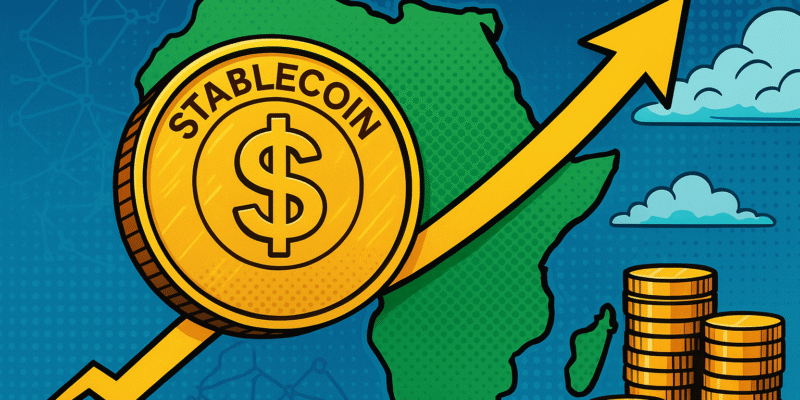The African digital-asset market is experiencing its biggest structural shift yet. Between mid-2024 and mid-2025, blockchain analytics firm Mariblock recorded more than $54 billion in stablecoin transactions across Sub-Saharan Africa. The report shows that these tokenised dollars now represent nearly 43 percent of all crypto value received on the continent, underlining the scale of Africa stablecoin adoption in daily finance.
For context, Africa moved roughly the same volume of on-chain value as some mid-sized European economies, despite limited access to formal banking infrastructure. The growth is driven by practical use cases rather than speculation. Businesses, freelancers, and individuals use stablecoins to store value, hedge against currency depreciation, and move funds across borders without paying high fees or waiting days for settlement.
Nigeria, Kenya, and Ghana continue to lead the market. In Nigeria, USDT and USDC dominate merchant payments and remittances, while startups are launching dollar-denominated savings accounts and on-chain credit systems. In East Africa, stablecoins are powering informal trade routes and cross-border logistics settlements that once relied entirely on cash or expensive remittance networks.
Analysts say chronic inflation, forex shortages, and complex banking regulations have pushed users toward stable digital alternatives. On most major African exchanges, stablecoins now make up the majority of trading volume. According to Mariblock’s data, crypto activity involving speculative tokens has declined even as stablecoin transactions surge, evidence that users are prioritising stability over volatility.
The rise of Africa stablecoin adoption also highlights the continent’s regulatory gap. Central banks in Nigeria, South Africa, and Kenya are developing rules to govern issuance and custody, yet most markets still operate in a grey zone. Industry observers warn that while regulation is catching up, innovation is moving faster, and governments risk losing influence over an increasingly decentralised payments environment.
Financial inclusion advocates see opportunity in the numbers. With smartphones and mobile wallets already widespread, stablecoins offer a bridge between traditional and digital economies. Startups are building payroll systems, remittance apps, and DeFi credit models that use stablecoins as the base currency, effectively dollarising parts of the informal sector through technology rather than policy.
The trajectory suggests that stablecoins are not a passing phase but a structural upgrade to Africa’s financial system. As regional and global fintechs deepen their footprint, Africa stablecoin markets could redefine what “digital money” means on a continent long constrained by currency instability and cross-border barriers.

Comments